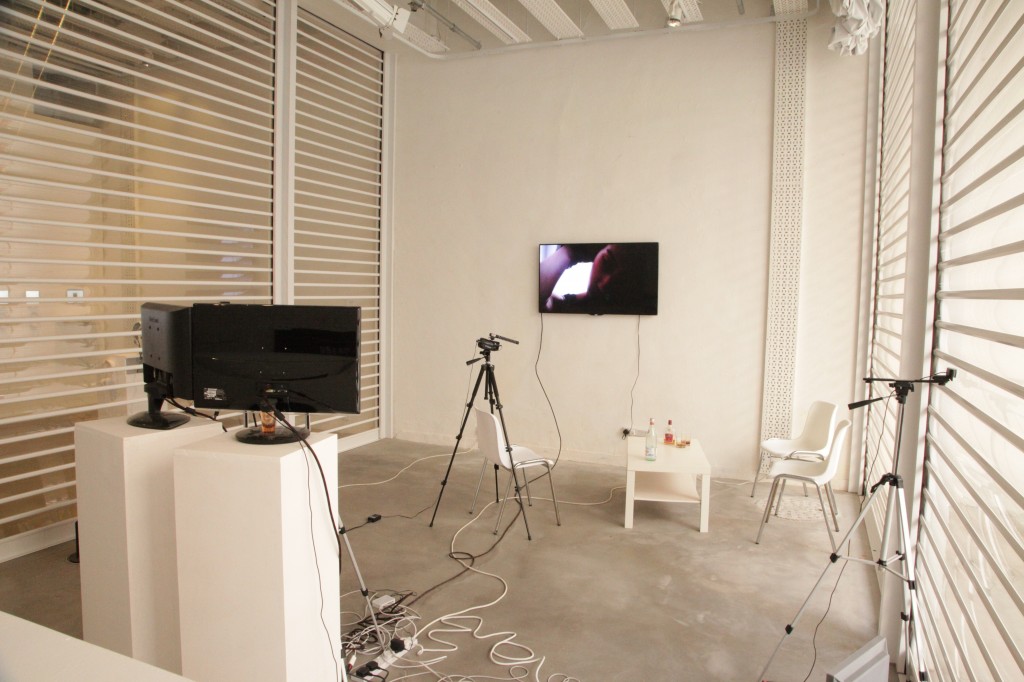
| Commission: | Commissioned by the Writing Machine Collective Created with support from DXARTS. | Exhibition: | Writing Machine Collective #5 Exhibited at Connecting Spaces Gallery, Hong Kong October 9 – October 22, 2014 | Materials: | Cameras, monitors, computers, furniture | Description: | This installation is a room in which a camera meticulously records the street outside the gallery (through a set of venetian blinds). A mechanical voice describes the scene in painstaking detail:
“…a makeshift roof runs with a slight divergence (toward the right) from the greatest angle of slope. There are seven windows beneath it, extending down to the lower visible edge of the balcony…”
“On the street, the pedestrian has disappeared. There is no one visible outside the building. No construction crew is working in this sector, for the moment.”
“Her lips are freshly made up – the lipstick color the same as their natural color, a trifle deeper, and her carefully brushed hair gleams in the light from the window when she turns her head.”
Another pair of cameras watches two monitors. The monitors play back a conversation between a man and a woman – a conversation that took place inside the same room that the cameras are now in, with the remnants of the conversation still present in the form of chairs, a table, drinks, and the camera that recorded them.
A large monitor is on the wall at the end of the room. From there the mechanical voice of the narrator emerges, with subtitles over footage that is taken from each of the cameras. The combined footage mixes live and pre-recorded video, a non-linear assemblage that repeats, loops and contradicts itself.
The room is sealed off, and none of its elements can be seen as an entirety. It is a room for obsession, possessiveness, suspicion, a room that denies any sense of completeness. Looking at it is a voyeuristic and complicit act, always on the outside looking in, where all we can know is what we are told, and even that is uncertain and fractured. | Credits: | Programming: Yi Ding, James Coupe. Speech synthesis: Juan Pampin. With special thanks to Kiki Ng, William Wong and John Robinson (University of York) Based partly on Jalousie by Alain Robbe-Grillet (1957) | Technical: | Jalousie Room uses computer vision algorithms to detect pedestrians and analyze the street scene outside the gallery, as well as to profile people inside the gallery. The work is built using a mixture of OpenFrameworks, OpenCV and Max/Msp/Jitter. |
| IMAGES: |  |
 |
 |
 |
 |
 |



